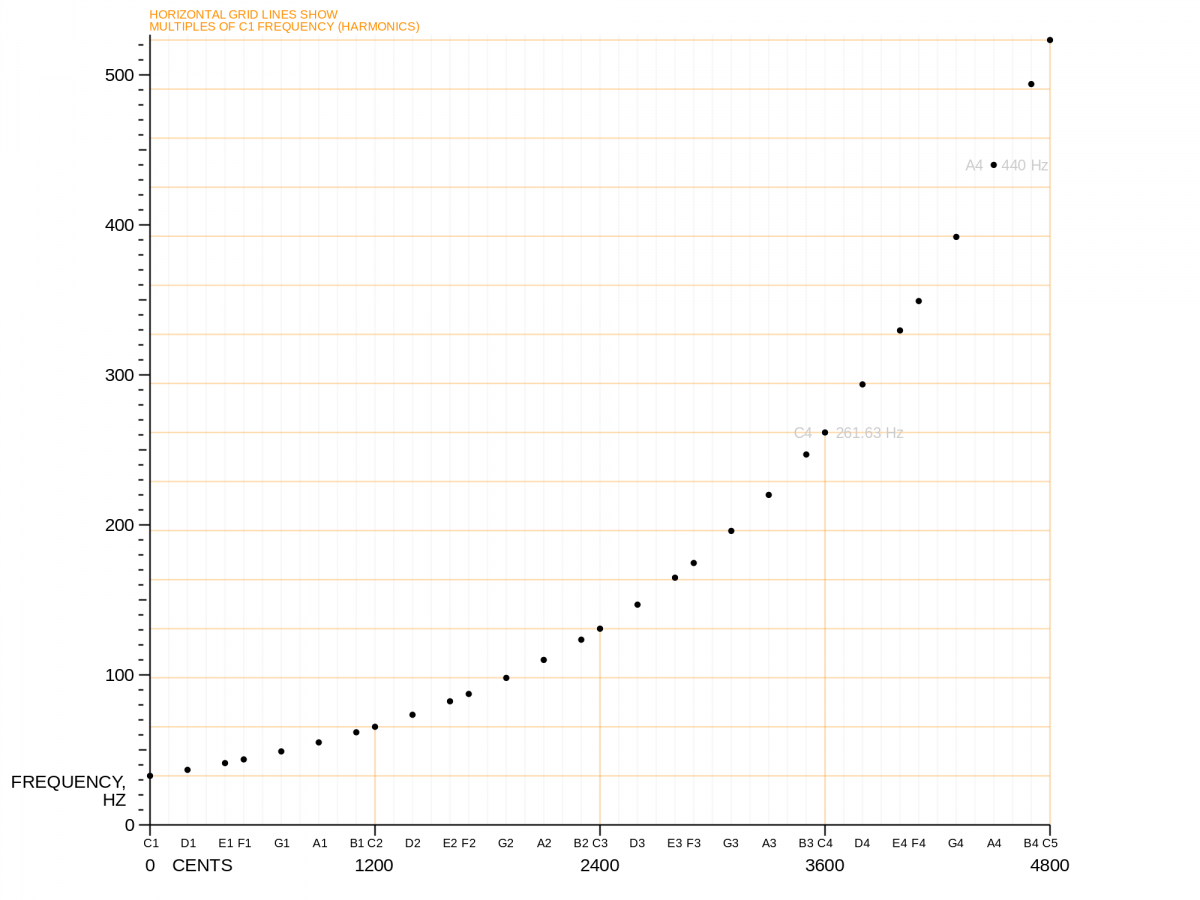When a string is plucked, it vibrates at a particular rate creating a note. A familiar concept to violinists, guitarists, cellists and…well anybody who plays a stringed instrument, and I’m sure anyone who has ever fired an elastic band across a room. The rate at which this string vibrates is known as the frequency (determined by string thickness, density, length and tension, f=(1/2L)√(T/μ)) which is measured in Hertz(Hz). As humans we perceive these frequencies within a given range as pitch. The range begins at about 20Hz and goes up to approximately 20,000Hz. For example concert A (the tuning pitch for orchestras) is 440Hz and middle C is 261.63Hz.
It’s probably at this point you’re beginning to wonder “In what way could this information possibly be useful?”.
Well, as many of you will know some notes sound better together than others (if you’re not aware of this, have a look at this video, about 3 minutes in). This has to do with how the two note’s frequencies are related. Notes whose frequencies are related by simple fractions tend to sound better together. Let’s take for example the note of A which we know to be 440Hz. If we half the frequency to 220Hz we arrive at another note of A only an octave down. Similarly if we double the frequency to 880Hz this is also the note of A, this time an octave up.
Taking this to the next level we can apply more complex fractions. If we take 3/2 of 440Hz we arrive at 660Hz or E and if we take 5/4 we arrive at 550Hz or C#. These are the fractional relationships between a major chord and by playing A, C#, and E we are actually playing the chord of A major. It is because of this fractional relationship we find harmonics (demonstrated rather nicely in this piece of music by Daniel Padim) situated exactly halfway, one third along, and one fifth along the string length of a guitar.
So, after all that, why would I write a blog about this? Apart from the fact that this is a very exciting application of maths. I suppose this was my rather long-winded way of demonstrating the often forgotten, cross-curricular nature of mathematics, and that perhaps (despite a very finely categorised curriculum) we should embrace the concept of learning in a way that accommodates individual difference and that allows for the blending of curriculum areas of which (Savage, 2010) describes as ‘sending a positive message to the children’ and as ‘rich pedagody’.
It seems that wherever I look there is always some aspect of maths to be found. Perhaps it could be combined with more curricular areas than just music…



Perfectly and succinctly explained!
Now, this is an aspect of the relationship between mathematics and music I had not considered. Obviously I know that certain notes sound better together than other combinations but had not delved into the reasons why. Your post makes perfect sense to me, particularly from a mathematical perspective, and now I’m asking myself why I didn’t realise that the synergy of notes had to be related to their frequency and the fractional relationship of these frequencies. Fascinating! Thanks for the cognitive prod.